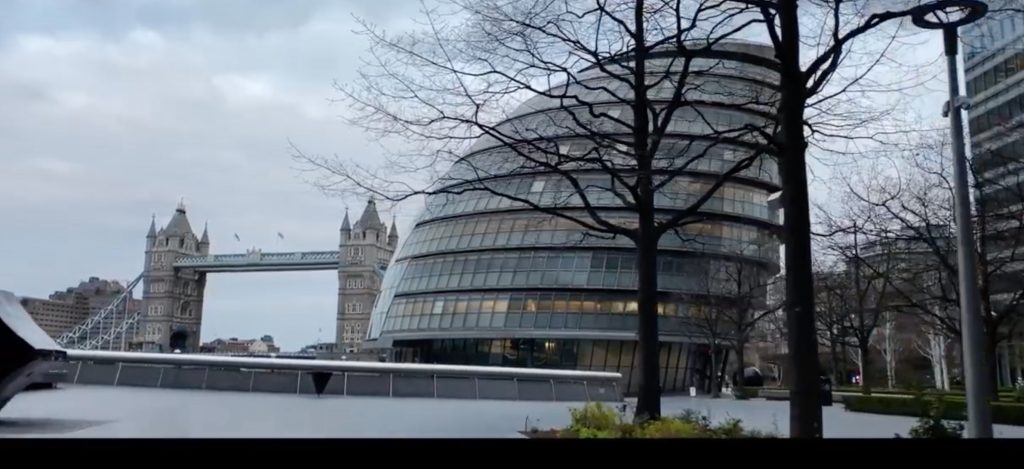Some genres are easy to define. Sci fi, for example, typically gives us a window on the near or distant future. In a horror picture, there’s almost always some sort of monster. But the experimental movie by its nature more difficult to pin down. Involving trial and error, its raison d’être is to fashion something not seen before. The one thing that experimental filmmakers have in common is their spirit of discovery. Take “Acid Rain” directed by Australian filmmaker Leigh Schilling.
Interview with Leigh Schilling
MobileMovieMaking: In addition to your studies at Swinburne, were there other ways you developed your filmmaking skills?
Schilling: I’ve been making short films or little comedy sketches for fun since I was maybe nine or ten–getting family or friends to act or hold the camera, no script, really just playing around and learning from mistakes. Online content has also been really helpful. There are so many amazing free resources on the internet, especially for learning the basics of cinematography, lighting and classical editing.
MobileMovieMaking: Are there any filmmakers whose work inspired you?
Schilling: “Acid Rain” had a number of strong influences. Godfrey Reggio—best known for The Qatsi Trilogy—is probably the most notable, both in terms of the rhythm/pacing and thematic concerns. I also drew inspiration from the art world in terms of the visual style–the hard urban lines and vanishing points of constructivism, and the multiple planes and ambiguity of surrealism.
MobileMovieMaking: How did you come up with the idea for Acid Rain?
Schilling: I was taking stills for a separate uni project after a storm, playing around with the angles to try and capture symmetry in the reflections in puddles. There was still a bit of rain around, which was making it hard to get the still reflections, but actually distorted the images really beautifully as video. I then started layering these videos and realised that I could create some really interesting and evocative imagery this way.
MobileMovieMaking: How did you plan the movie?
Schilling: I had an idea of what I wanted to achieve, but didn’t formally script or storyboard it fully. A lot of the shots were trial and error, experimenting in the edit room and then going out and reshooting, trying to distil it down. It was a very organic process.
MobileMovieMaking: What gear did you use?
Schilling: I shot on a Moto G6, a fairly affordable smartphone, and paid a few dollars for the FiLMiC Pro app which allowed me to shoot in higher resolutions and have full control of the aperture, shutter speed etc. The biggest advantage was having my camera on me at all times, allowing me to take a few seconds of footage whenever I saw something that interested me. I also shot the film mostly alone, so having a small and light setup was massively beneficial. I used a tripod for the static shots, a Zoom H5 for the audio capture, and post was all completed in Premiere Pro.
MobileMovieMaking: How long did the shoot take?
Schilling: The shoot was sort of staggered, 4 days over about 3-4 weeks. There were countless problems mostly to do with the weather, or the angles of shots I’d visualized not matching up in real life, and solving them was usually a matter of patience, trial and error. Unfortunately this isn’t always a practical approach on a more traditional set where time is often critical, but I was lucky in that I’d started early and planned to be unplanned, in a way.
MobileMovieMaking: Could you talk about your approach to the editing—for example, the use of the black screens between shots?
Schilling: Editing, like production, was all about experimentation. It was an ongoing process whereby I would shoot some footage, try a few different edit combinations, shoot some more, edit some more, until I had something that I was happy with. It was more of a constant tinkering rather than a post-production workflow. The ‘empty air’ shots were actually something I had in mind from quite early on. I wanted to give the viewer a chance to process what they’d just seen, rather than bombarding them with complex images. It’s a reflective time, and it also gives a rhythm to the film through metric montage–although, the blackness actually gradually increases in the second half of the film, from 6 seconds to about 10.
MobileMovieMaking: The soundtrack is beautifully done. Could you tell how you put it together?
Schilling: The majority of the sounds are naturally occurring, with the exception of a few I felt were needed and couldn’t find and isolate in the real world. The mix was the last part of production and took a few days. I tried to build the sound up naturally in a way that matches the weather onscreen and creates a nice climax. Generally the sounds themselves stay at the same volume, but more layers are added as the film progresses.
MobileMovieMaking: How have audiences responded to “Acid Rain.”
Schilling: I’ve had a lot of different responses to the film, from those who found it calming and reflective, to flat, to intense, to really unnerving. I definitely had a tone in mind during production, but I think that it’s great (and natural) that different people react differently.
MobileMovieMaking: Can you give us a hint about your next project?
Schilling: I’m in preproduction for a narrative short called “Boxing Day,” hopefully to be completed by the end of the year (global pandemic pending).
# # #
The editors of MobileMovieMaking have chosen “Acid Rain” as the Mobile Movie of the Week.
You can learn more about the director on Facebook and Vimeo.



 Previous post
Previous post
 Next post
Next post





